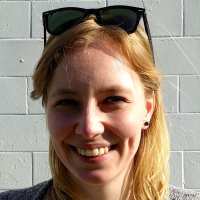Birgit Sutzl
Quantifying heterogeneity and microclimates in urban developments
Started: October 2017
Supervisor: van Reeuwijk, M.
As part of the CDT in Mathematics of Planet Earth
Description of Research
The majority of the world’s population now lives in cities, and with a continuing trend of urbanisation cities are under increasing pressure from resource scarcity, air pollution and hazards from a changing climate. In order to develop effective strategies for these problems, it is important to understand the complex interplay of the heterogeneous urban environments of streets, buildings and open space with each other and various atmospheric weather conditions. This project will seek to gain fundamental insight into the modelling of urban heterogeneity and its effects on the urban microclimate. Based on the DALES-URBAN Large-eddy-simulation model, which can resolve the air flow between individual buildings to the scale of meters, the aim is to develop a reduced order model for the heterogeneous urban surface. This model can then be used to study optimal design strategies for streets, open spaces and the use of urban vegetation, in order to contribute to sustainable and resilient urban developments.
Background
Birgit has an MSc from Heriot-Watt University in Edinburgh in Applied Mathematical Sciences, a BSc in Mathematics from Vienna University of Technology and a BA in Linguistics from the University of Vienna.
Birgit Sutzl
 Fluid Mechanics Research Student
Fluid Mechanics Research Student
Department of Civil & Environmental Engineering
Imperial College London SW7 2AZ
b.sutzl16@imperial.ac.uk


